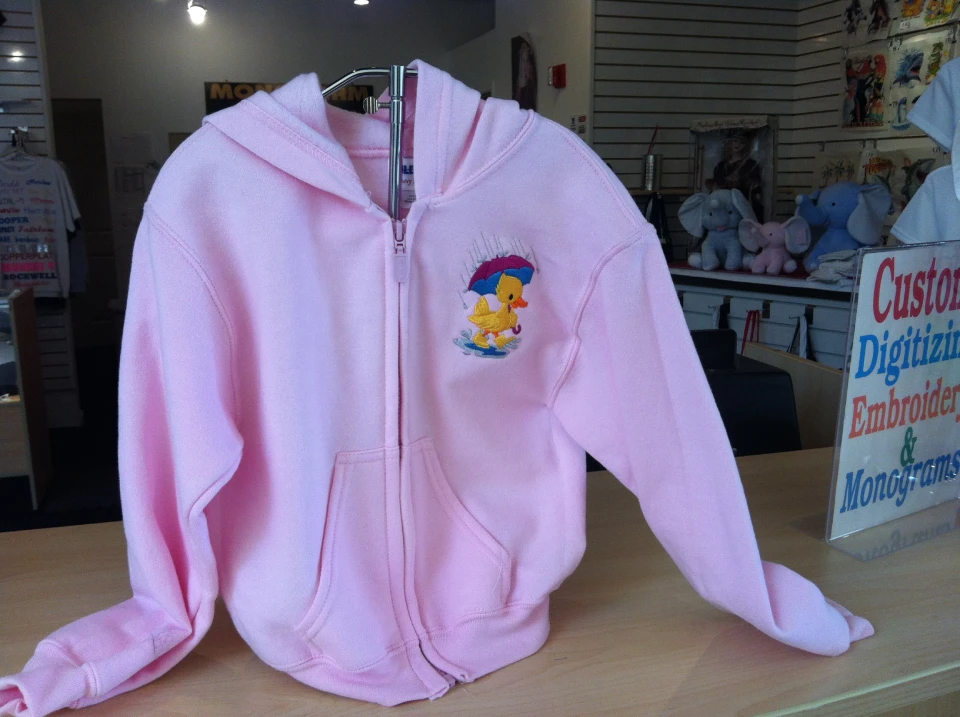Personalized School Uniforms with High-Quality Embroidery Services
Personalized School Uniforms with High-Quality Embroidery Services
Blog Article
The Art of Custom Embroidery: Unlocking the Tricks to Creating Special and Remarkable Layouts
Embroidery, a craft soaked in practice and artistry, holds within its elaborate stitches the power to transform material into a canvas of special expression. The keys to developing personalized needlework layouts that captivate the eye and leave an enduring impact hinge on a fragile equilibrium of strategy, creative thinking, and focus to information. As we dive right into the globe of custom-made needlework, we uncover the nuanced interplay between thread option, sew intricacy, and style customization that raises a mere garment to a work of art. Join us on a trip via the art of personalized embroidery as we decipher the secrets behind crafting truly memorable and unique developments.
Picking the Right Needlework Threads
When choosing embroidery strings, what key factors should you take into consideration to guarantee the very best results for your custom-made layouts? The choice of embroidery string is crucial in figuring out the last outcome of your embroidered layout. Among the primary considerations is the product of the string. Various products such as cotton, polyester, rayon, and silk provide varying degrees of luster, resilience, and structure. It is necessary to pick a string product that complements the fabric you are embroidering on and lines up with the preferred appearance of the layout.
Thicker threads can include measurement and structure to your design, while finer strings are optimal for elaborate information and little text. In addition, thinking about the shade fastness and washability of the string is important to guarantee that your customized layouts preserve their quality and vibrancy over time.
Discovering Different Stitch Strategies
To explore the realm of 'Exploring Different Stitch Methods', one should grasp the ins and outs and nuances that each stitching approach gives the art of needlework. Different stitch strategies not only add aesthetic rate of interest yet likewise add to the overall structure and measurement of the style. One preferred stitch technique is the satin stitch, which includes carefully stuffed parallel stitches to produce a smooth and glossy surface, suitable for loading in shapes and producing vibrant outlines.
On the various other hand, the backstitch is a functional technique commonly made use of for outlining and adding great information. It involves stitching backwards to develop a strong line of needlework. Additionally, the French knot stitch adds a responsive component to layouts, excellent for developing textured accents like blossom centers or decorative touches.
Discovering various stitch methods permits embroiderers to play with light, darkness, and depth within their layouts, boosting the aesthetic charm and imaginative quality of their embroidery tasks. By understanding various sewing techniques, one can unlock countless possibilities for creating special and memorable custom needlework pieces.
Incorporating Personalized Design Aspects
Having actually discovered the details of various stitch techniques such as the go to these guys satin stitch, backstitch, and French knot, the emphasis currently shifts towards including tailored style elements in custom needlework tasks. Customized layout components play an important role in making needlework jobs truly one-of-a-kind and unforgettable.
Another method to incorporate individualized design components is by consisting of signs or concepts that hold special definition to the recipient or show their interests and character. Incorporating a favored flower, pet, or hobby-related icon can make the embroidery style more significant and tailored. Additionally, selecting shades that reverberate with the recipient or align with the designated motif can further improve the customization of the needlework project.
Grasping the Art of Shade Control
One trick aspect of shade coordination is comprehending shade theory. This consists of knowing just how various shades communicate with each other, the feelings they share, and how they can be incorporated to create aesthetically appealing designs. By applying color concept principles, embroiderers can develop unified color schemes that boost the overall look of the layout.
Additionally, focusing on comparison is vital in color coordination. Utilizing contrasting shades can help certain elements of the style pop, enhance clarity, and develop an aesthetically dynamic needlework item. By understanding the art of shade coordination, embroiderers can boost their layouts and produce unforgettable items that reverberate with customers and customers alike.
Enhancing Texture With Advanced Needlework Stitches

Bullion knots, on the various other hand, can be utilized to produce twisted, ropelike components that add a glamorous feel to the needlework. Exploring with these innovative needlework stitches permits you to push the borders of typical embroidery and produce really unique and visually enticing textures in your designs.
Conclusion
Finally, the art of custom-made embroidery involves a combination of picking the best strings, discovering different stitch strategies, including customized layout aspects, understanding color sychronisation, and improving appearance with innovative stitches. By recognizing and executing these crucial elements, embroiderers can produce unique and unforgettable layouts that showcase their imagination and skill. Embroidery lovers can unlock the tricks to developing lovely and custom pieces that basics stand apart and leave an enduring impression.
Report this page